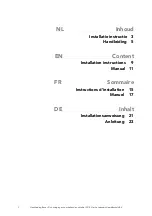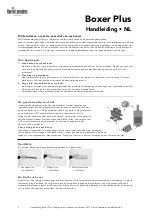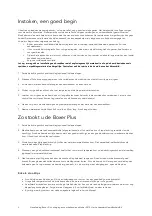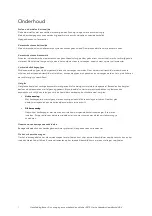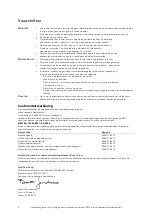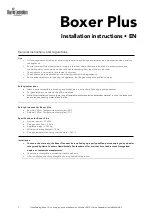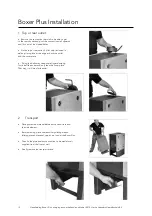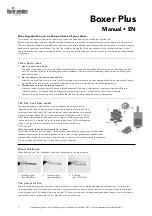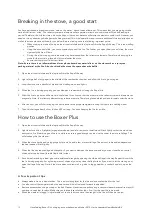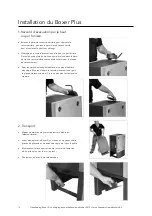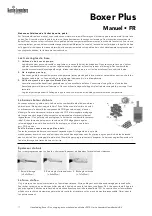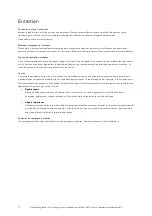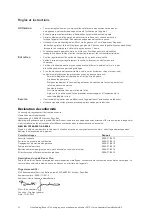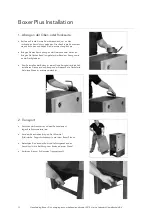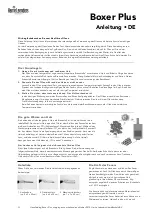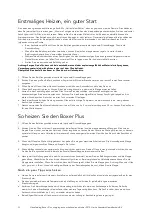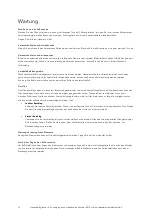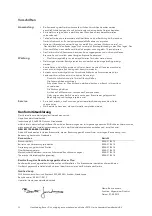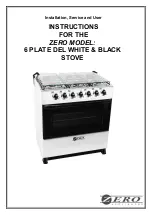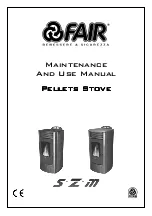
Handleiding Boxer Plus, wijzigingen voorbehouden, oktober 2012. Harrie Leenders Haardkachels BV
12
Breaking in the stove, a good start
You have purchased a brand-new stove: ‘zero on the meter’, has not seen a flame yet. This means that you are going to take
care of the first few ‘miles’. The refractory ceramic elements will evaporate moisture and your stove will start its breaking-in
period. Therefore, the first few times, do not build your fire too hot because otherwise the elements could crack. However, you
need not worry about any shrinkage cracks being formed. This initial operation requires some additional time and attention as
well as the steps we have outlined for you below. Before starting, note the following important points:
•
When starting to make a fire, open the air-control slide and the (optional) throttle flap all the way. This is the kindling
position.
•
Using the air-control slide, you can conveniently control the fire. The further you open the air-control slide, the more
vigorously the fire will burn.
•
During the initial start-up, some moisture may be released from the refractory elements. Therefore, when using the
stove for the first time, place a(n old) towel under the stove.
•
Ensure that there is sufficient ventilation.
Note: Ensure there is no inflammable and/or explosion-hazardous material in or on the stove such as a spray can,
packing material or the like. Also check inside the stove the space above the baffle.
1. Open the air-control slide and the (optional) throttle flap all the way.
2. Light a large ball of dry paper in the middle of the combustion chamber and allow this fire to go out again.
3. Load the stove with a handful of dry and thin kindling wood and light it.
4. When the fire is burning properly, you can dampen it somewhat by closing the flap a little.
5. Allow the fire to go out and the stove to cool down for an hour so that the moisture in the refractory ceramic elements can
evaporate. Note: the refractory elements may release moisture. Therefore, place beforehand an old towel under the stove.
6. After an hour, you will start bringing the whole stove to the proper temperature using first some thin kindling wood.
7. Then, thicker logs about 5x5 cm thick and 30 cm long. Continue keeping the fire for a while.
How to use the Boxer Plus
1. Open the air-control slide and the (optional) throttle flap all the way.
2. Light the stove with a firelighter (or paper/cardboard) and a fair amount of small wood. Stack lightly so that the wood can
easily catch fire. Maintain a good fire for a while to ensure a good draught, and a nice fire under the more solid logs. This
will also keep the flue cleaner.
3. When the stove has been burning properly for a while, add a few, more solid logs. The amount to be added depends on
the heat needed. Stack lightly.
4. When the flue has reached a good draught or if you want to dampen the stove somewhat, you can close the air-control
slide and/or the (optional) throttle flap a little further.
5. Each time after adding a load, give some additional draught by opening the slide and flap all the way. Repeat this until the
fuel is burning properly. For a glowing mass of charcoal, you may close the flap further. If you want to let the stove go out,
open the flap all the way. Note: if the stove does not draw well, e.g. due to foggy weather, a cooker hood etc., open the
flap.
A few important tips
• Always make a fire on a bed of ashes. This is an insulating layer for the fire and an excellent bed for the fuel.
• You also control the temperature by the amount and kind of fuel used for each load added.
• Remove excess ashes using a scoop or the Ash Cleaner. Never remove ashes using a vacuum cleaner because fire may still
continue to smoulder for days. Make sure you leave a layer of ashes (abt. 3 cm) for the next fire to be made.
• When the weather is foggy, it is preferable not to use the stove since the draught in the flue will then be too low.


